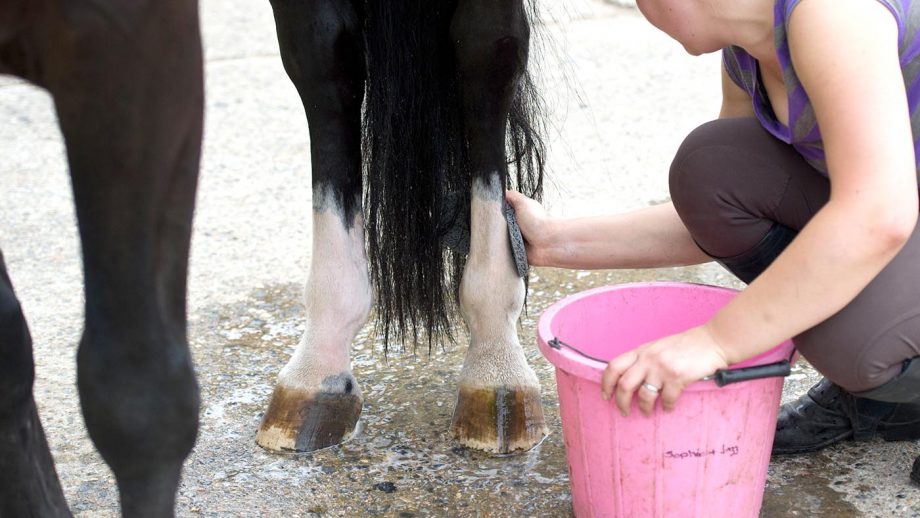When it comes to showcasing your equine friends beauty, learning how to plait horse mane is a skill worth mastering. This not only enhances the horses appearance but is also essential for competitions and shows. Ensuring your horse’s mane is well-kept is a reflection of your dedication and care.
Beginning with the right tools and following a structured technique helps you achieve the best results. Throughout this article, you will discover everything you need to know about mane plaiting and the best practices to keep it well-maintained.

Importance of Plaiting a Horse’s Mane
Plaiting is not merely an aesthetic task; it has practical implications. It helps in keeping the mane tidy on windy days and prevents it from entangling during riding sessions or shows.
A plaited mane can enhance the horse’s profile, showing off its musculature and neck length, which is particularly crucial in performance and visual appeal. Essential Gear can also play a role in this process.
Understanding the Basics of Mane Plaiting
Plaiting involves sectioning the mane into various parts, each twisted into neat and even braids. Familiarization with different plaiting styles like the ‘hunter braid’ or ‘button braids’ is vital.
Knowing how to plait horse mane can significantly influence how your horse is perceived in the equestrian world, marking a distinction of care and attention to detail.
Preparing Your Horse and Tools
Equipping yourself with the right tools is fundamental. Essential supplies include a mane comb, bands or thread, a mane brush, and detangling spray. Consider reading Horseback Riding Safety for more preparation tips.
Ensure your horse is comfortable before you begin. A calm and relaxed horse simplifies the plaiting process.
Gathering Necessary Tools
Having every tool within reach saves time and keeps the process smooth. Essential items include:
- Mane comb and brush
- Small plastic bands or yarn for tying
- Firm hold hairspray or water
- Scissors for neat finishing touches
Step-by-Step Mane Plaiting Process
Lets break down the steps needed to execute a flawless mane plait. Patience and a gentle approach are key factors in ensuring excellent results.
Step 1: Calming and Relaxing the Horse
A soothing environment is necessary before you start. Your horse should be tied up safely, demonstrating calm behavior. Interact and talk to your horse to make it more comfortable. Ensure you have bonding activities that can help maintain equanimity.
Step 2: Washing and Conditioning Mane
Start by washing the mane thoroughly, removing all dirt and debris. Conditioning helps to soften the hair, making it easier to plait. Using conditioners will additionally add shine to the mane.
Step 3: Combing and Detangling the Mane
Detangling is crucial, providing a smooth plaiting experience. Use a comb to straighten out any knots or tangles carefully. Consider using a detangling spray to ease the process.
Techniques for Different Mane Plait Styles
Valorously explore varied techniques such as button braids, continental braid, or hunter braids. Each style combines aesthetic and practical benefits, suitable for different events or weather conditions.
Creating Button Braids
Fond of formal shows, button braids are neat, ensuring the neck of the horse stays visible. Divide the mane into even sections. Each section is braided tightly before looping and securing with bands.
Hunter Braids for Competitions
Hunter braids lie flat against the neck, providing a sleek look. Zero in on clean sectioning and tight braids for this style to shine. Make sure the plaits are uniform in size.
Maintaining the Plaited Mane
Once your braids are in place, its essential to maintain them. Regular checks ensure they remain tidy and don’t cause discomfort to the horse.
Dealing with Loose or Fallen Braids
If a braid comes loose, repair it promptly. Carrying spare bands helps, as replacing them when necessary maintains neatness.
For assistance on maintaining other horse equipment, visit this informative article about Equestrian Gear Storage.
Common Mistakes and Troubleshooting
Every novice mane plaiter makes mistakes. Understanding these common errors helps troubleshoot issues and achieve flawless results.
Plaiting Too Tightly
A common misstep is plaiting the mane too tightly, causing discomfort. Regular checks during plaiting prevent the mane from pulling and ensure comfort.
Overlooking Mane Length
Another common mistake is failing to consider the length of the mane. Adjust plans to the specific situation of each horse, ensuring neither the mane is too long nor too short.
FAQs
What is the best mane length for plaiting?
A mane length of 4 to 6 inches is ideal for most plaiting styles. This length is manageable, easy to clean, and creates lush plaits.
How often should I plait a horses mane?
Frequent plaiting can lead to hair breakage. Its generally best to reserve plaiting for special events or competitions.
Are there any health benefits to plaiting a mane?
Yes, a well-kept mane can prevent skin irritation, reduce tangling, and improve the horse’s overall appearance.

Conclusion: Plaiting for Pride and Presentation
Learning how to plait horse mane is a rewarding task that displays your skills and showcases your horses beauty. By following these steps and maintaining a patient approach, both you and your horse will feel pride in the practice, ensuring a polished and presenting look.
Incorporating regular grooming routines will elevate the overall health and happiness of your horse. Whether preparing for a show or enjoying a leisurely ride, a beautifully plaited mane is a testament to your dedication as a devoted equestrian.








